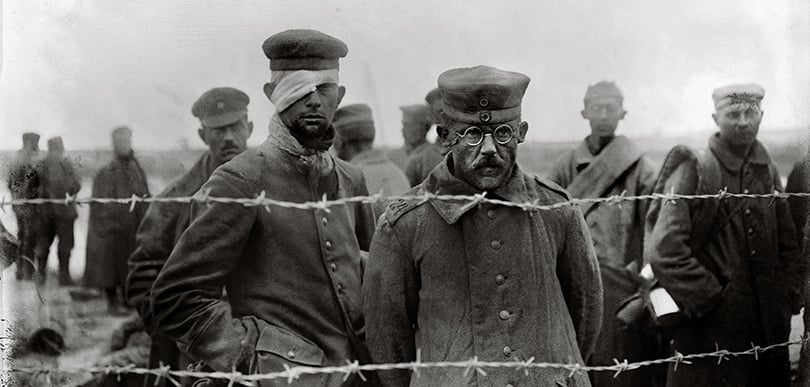
Prisoners of World War I
An estimated eight million men were taken prisoners of war (POWs) during World War I. These prisoners, often scarred by their time in the camps, rarely talked about their experiences later in life. Explore historic images and footage from the Bridgeman archive to get an impression of what reality was like for prisoners in World War I.
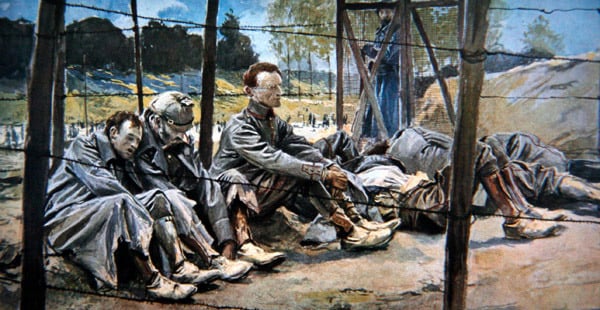
German officers captured by the French during an Allied offensive, First Battle of the Somme, July 1916 (colour litho), Flameng, Francois (1856-1923) / Private Collection / Peter Newark Military Pictures
Conditions in the prison camps varied from country to country but by and large, captured soldiers fared better than their comrades left on the battlefield. This is mainly due to all the nations agreeing to follow The Hague’s rules of conduct for treating POWs fairly, as well as efforts by the International Red Cross inspecting camps.
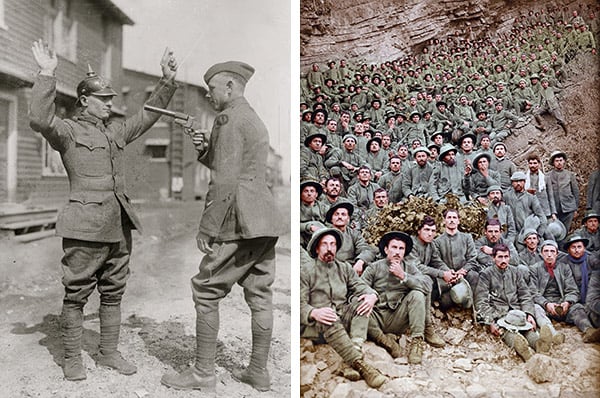
Left: Captured German Soldier (photo) / Universal History Archive/UIG
Right: Italian prisoners of war near Flitsch after the Second Battle of the Isonzo, Slovenia, September 1915 (photo), German Photographer, (20th century) / © Galerie Bilderwelt
Allied POWs in Axis Camps
Germany held over 2.5m POWs, while Austria-Hungary held over 1m. Most of these were Russians captured in battles on the Eastern Front. The German’s organised a system of camps to hold their prisoners, both in Germany itself as well as in occupied territories. Hygiene and disease became major problems in the cramped conditions so wherever possible, camps were built in the countryside to protect civilian populations coming down with illness.
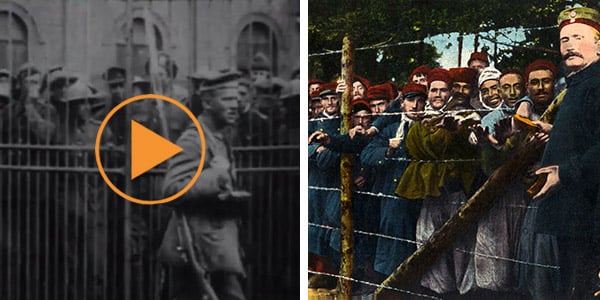
Left: French and British prisoners of war, WWI
Right: “In the Prison Camp”, 1915 (colour litho), German School, (20th century) / Private Collection / © Galerie Bilderwelt
Axis POWs in Allied Camps
Most Axis POWs were held in Russia, with almost 3m in total. France and the UK also had significant populations of Axis POWs, numbering just over 0.7m. Conditions were particularly bad in the Russian camps, mainly due to starvation – a problem for the population in general, not just the POWs.
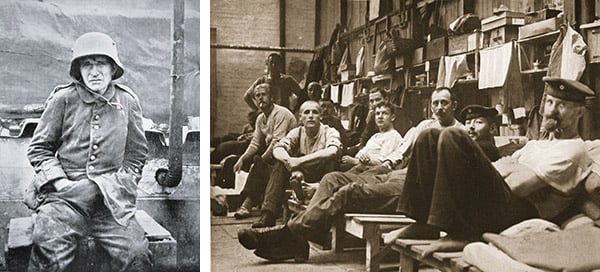
Left: German POW captured at the First Battle of the Somme, November 1916 (b/w photo), British Photographer, (20th century) / Private Collection / Peter Newark Military Pictures
Right: In Quarters, Handforth, illustration from ‘German Prisoners in Great Britain’ (photogravure), English Photographer, (20th century) / Private Collection / The Stapleton Collection
Conditions for those captured on the Western Front were better. Jacques Moreau (b.1887) was one of the photographers that recorded soldiers in French prison camps. One of his most iconic images is a close up of two prisoners in France (pictured above), standing behind barbed wire with almost expressionless faces.
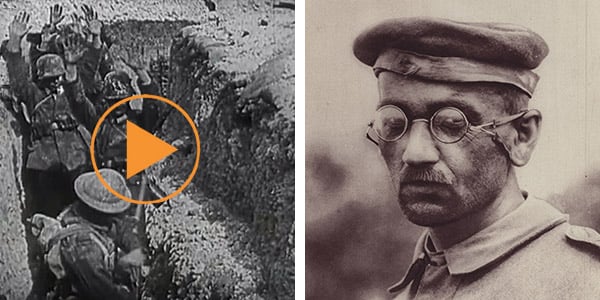
Left: WWI, allied troops fighting from trenches, German troops surrender in trench, Ludendorff and Hindenburg discuss movements over map. 1917
Right: Types of the German prisoners captured at Messines, taken at random, a sample in physique of the ordinary German linesman (b/w photo), English photographer, (20th century) (after) / Private Collection / © Look and Learn
The signing of the Armistice in 1918 meant not only the end of war, but also the end of years in captivity.
Find out more
See more images and footage of prisoners of World War I in the Bridgeman archive.
Contact the Bridgeman sales team (uksales@bridgemanimages.com) for more information regarding licensing, reproduction and copyright issues.
